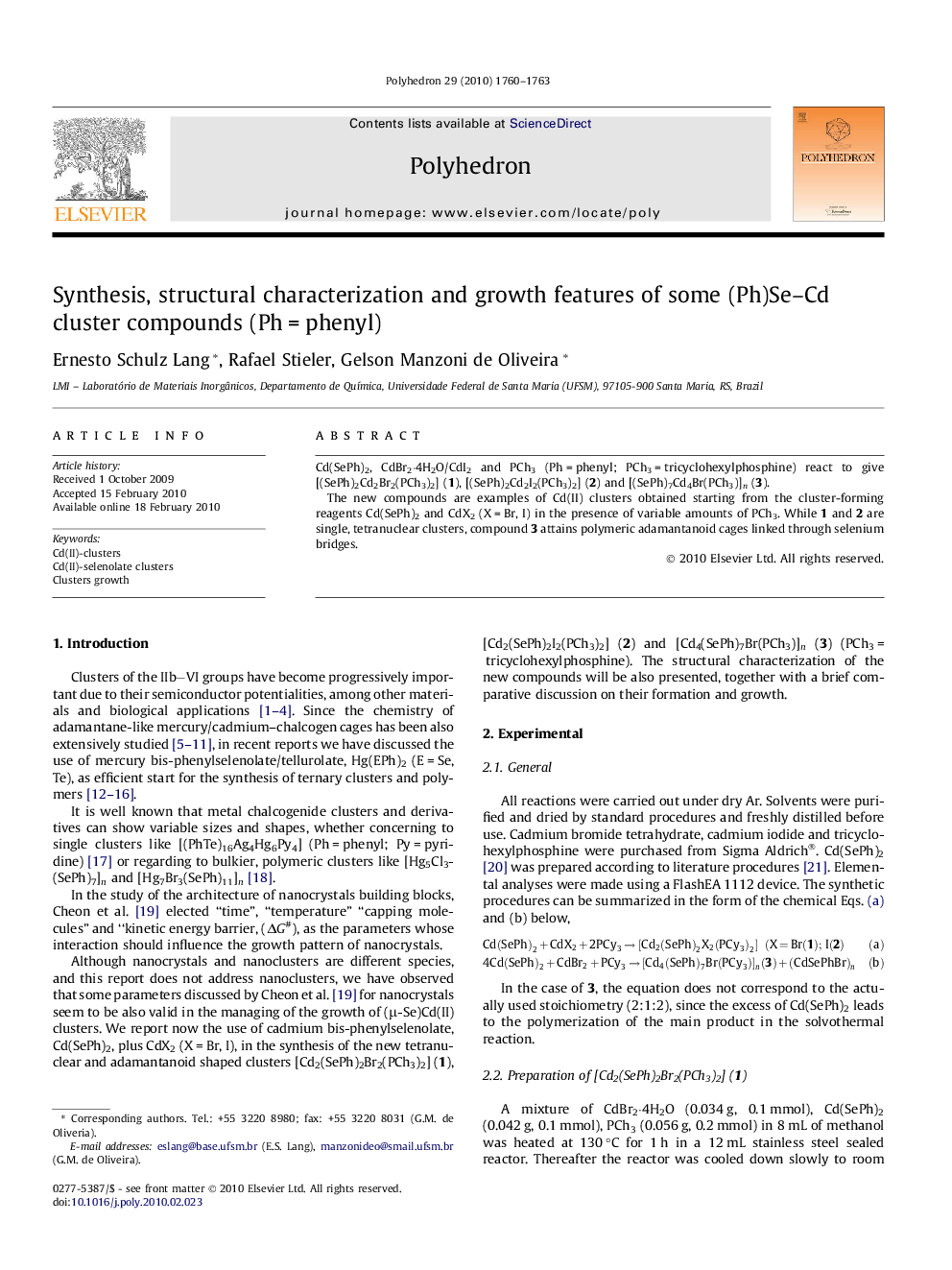| کد مقاله | کد نشریه | سال انتشار | مقاله انگلیسی | نسخه تمام متن |
|---|---|---|---|---|
| 1339175 | 979697 | 2010 | 4 صفحه PDF | دانلود رایگان |

Cd(SePh)2, CdBr2·4H2O/CdI2 and PCh3 (Ph = phenyl; PCh3 = tricyclohexylphosphine) react to give [(SePh)2Cd2Br2(PCh3)2] (1), [(SePh)2Cd2I2(PCh3)2] (2) and [(SePh)7Cd4Br(PCh3)]n (3).The new compounds are examples of Cd(II) clusters obtained starting from the cluster-forming reagents Cd(SePh)2 and CdX2 (X = Br, I) in the presence of variable amounts of PCh3. While 1 and 2 are single, tetranuclear clusters, compound 3 attains polymeric adamantanoid cages linked through selenium bridges.
Cd(SePh)2, CdBr2·4H2O/CdI2 and PCh3 (Ph = phenyl; PCh3 = tricyclohexylphosphine) react to give the tetranuclear clusters [(PhSe)2Cd2Br2(PCh3)2] and [(PhSe)2Cd2I2(PCh3)2], and the polymeric adamantanoid cages [(PhSe)7Cd4Br(PCh3)]n, linked through selenium bridges.Figure optionsDownload as PowerPoint slide
Journal: Polyhedron - Volume 29, Issue 7, 10 May 2010, Pages 1760–1763